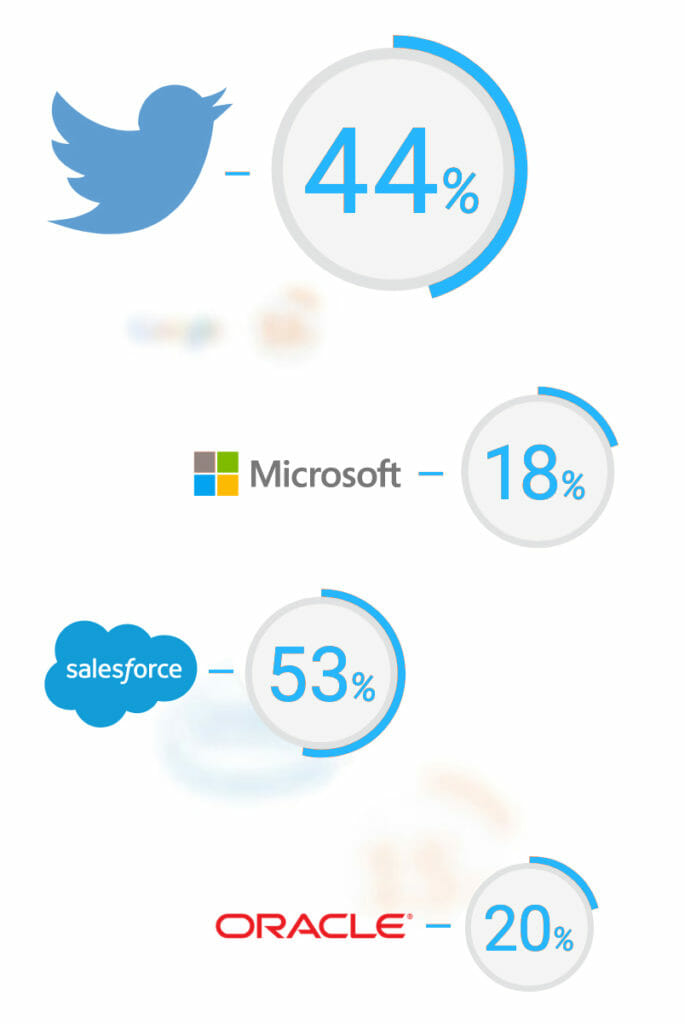
Determining a marketing budget can be frustrating. Are you investing enough? Are your marketing dollars being applied in the most efficient way? How do you know if what you’re doing is working? There are subjective answers that are easily disprovable from one budget year to the next. What worked last year isn’t necessarily going to work this year. What works for one type of client may not work for another.
For the last 20 years, I’ve watched companies struggle with this dilemma. While using Google Analytics, tracking tools and other forms of marketing tools to help in terms of defining an ROI on your marketing, but those won’t tell you how much to invest to begin with. Here are two simple equations that can take a lot of the guesswork out of the process. They are:
= 10 | T = $
You’re now probably asking yourself “What the heck does that mean?” So let’s take a step backwards.
The Dilemma With Marketing Budgets
A lot of companies tend to have a love/hate relationship with marketing:
- They love to talk about how wonderful their business is, how great their products and services are, and to see their business advertised online, print and in videos.
- They hate that their audience often doesn’t seem to identify with or buy in to the narrative they’ve created.
- They love buying particular marketing tools and services so they don’t have to hire more marketing staff.
- They hate paying for these services when they don’t have experienced staff who will be able to work closely with a marketing agency or the tools they invest in.
Many business I’ve worked with claim to have a large marketing budget set aside. But more often than not, the majority of that budget is actually set aside for sales, not marketing. There’s a good reason for this. Sales have an obvious impact on the bottom line. Marketing, not so much.
Businesses know they “need marketing,” and as soon as they figure out why, they tend to invest appropriately in it. But until then, figuring out the value and the cost of the effort is elusive and it often gets put on the back burner as a result.
The benefits of marketing are clear. And it’s true that successful businesses invest a significant amount in marketing services. A Gartner/CMO report from 2016 showed major public companies spend more, sometimes a lot more, than 10% of their total revenue on marketing.
The numbers have remained consistent within industries over the years, although there are differences between industries. For example, the most successful B2C software companies on average dedicate 15% of revenue to marketing, while leading companies in the home services industry spend just a little more than 5%. However, research has shown that when business fall below 5%, they experience slow growth or no growth at all.
There is a direct correlation between a business’ success and its overall investment in marketing. Going back to my equation (1 = 10), I’ve found that for every dollar you put into your marketing budget, you will see a return of $10 in revenue, by default. This is an observable fact. Even average marketing programs will most likely see this kind of return.
But spending more on marketing does not automatically mean you will see more revenue. It all depends on how you spend the money. There are reports that companies like Twitter and Salesforce put a lot more than 10% into their marketing, but as we have mentioned, those numbers usually include some form of sales.
And in case I wasn’t clear above, SALES IS NOT MARKETING. If your marketing budget includes sales, and it stands at 10%, your actual marketing budget is more likely around 3%. This creates a classic conflict between sales and marketing staffs. Marketing blames sales for being incompetent, and sales blames marketing for being clueless. In the end, the real blame lies in the executive team for not properly allocating resources.
It’s not just about money. It’s also about time and resources.
No matter how much you spend on marketing services or tools, if you put little or no strategic thought into your marketing and you just try to keep up with your competitors, you’ll see very minimal ROI.
Just spending money on marketing is not the answer. You can have all the latest gadgets and tools, but without a team to use them, they are as useful as a pile of dirt.
And that brings me to my second equation…
Time Equals Money (T = $)
 When you are determining your marketing budget, you have to think about more than how much the services cost. You also have to factor in the time you and your staff will have to put into working with the agency and tools, because T = $.
When you are determining your marketing budget, you have to think about more than how much the services cost. You also have to factor in the time you and your staff will have to put into working with the agency and tools, because T = $.
Let’s look at how this plays out from a practical standpoint:
1. Take a look at your marketing team (if you have one) and identify who is full-time and who is part-time. Add up the time they put into marketing, and then divide their salaries by the number of hours. That will give you the hourly time investment in the form of cash.
2. Then take a look at how much you spent last year on external marketing services. Add this amount to your internal investments.
3. Compare that total to your end-of-year revenue. If you are right around 10%, then you did OK. If you made more, you are doing well. If you made less, something is wrong.
4. Now, consider what you want to do in the next year. Is that budget, including expenditures and personnel time, sufficient for driving you to your goal? If not, then you need to consider a greater investment.
If you hire staff but then don’t give them the tools to achieve success then you’ll always be left feeling like your marketing is lacking.
The evidence is clear that an investment including staff combined with a full-service marketing agency offers a positive ROI, but you don’t have to be spending a ton of money to make it happen. It’s all about finding the right balance and allocating your resources in best way for your business.





About The Author: Kevin Watts
Kevin Watts is the founder of Raincross, a premier web design, development and digital marketing agency headquartered in Riverside, CA.
Kevin got his start in online marketing and website design by working for some of the most prominent names in online retail. He's most recognized for helping to start e-commerce retailer Organize.com in 1998, and spent 12 years running the company's e-commerce and online marketing operations. He has been recognized and has received several online retail, marketing and merchandising awards throughout his career.
Kevin grew up in Riverside, CA and graduated from the University of Wyoming. In his spare time, Kevin is an avid fly-fisherman, college football fan, and enjoys spending time with his son Matthew, daughter Kate and wife Lindsey.
More posts by Kevin Watts